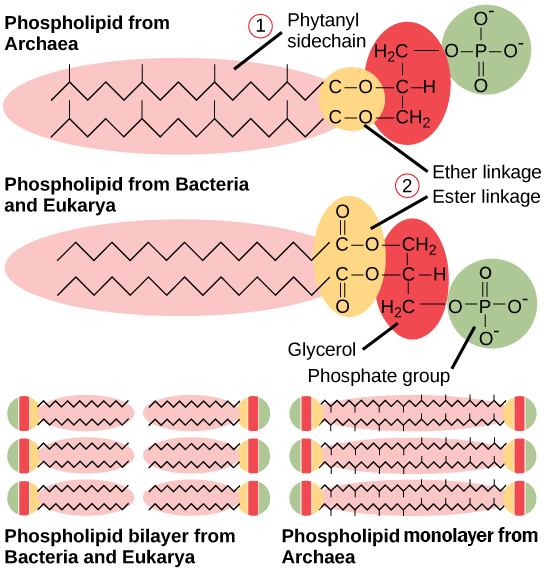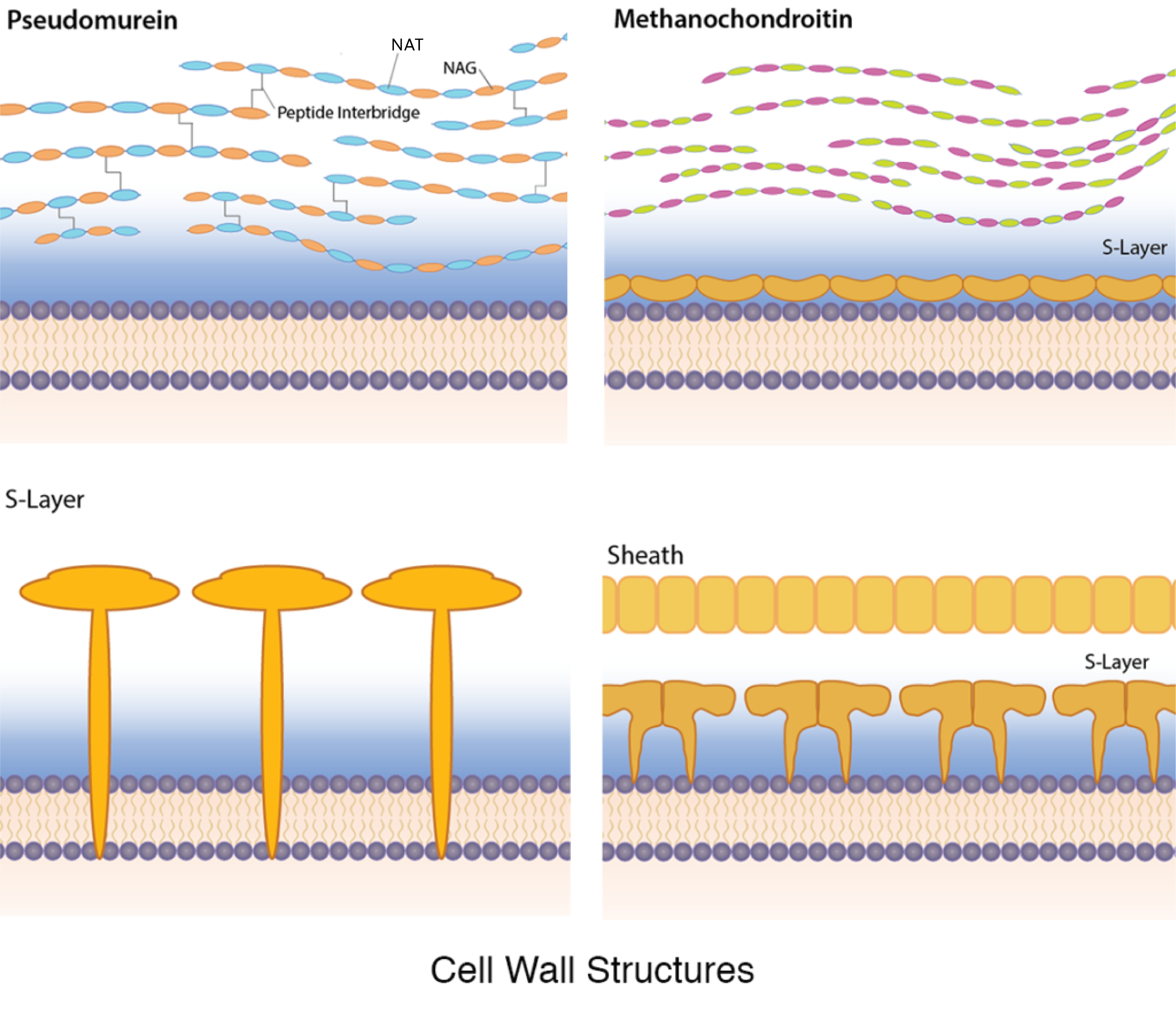Lack peptidoglycan Most common cell wall is S layer May have protein sheath external to S layer S layer may be outside membrane and separated by pseudomurein Pseudomurein may be outermost layer similar to Gram-positive microorganisms. 21 The Archaea generally lack which of the followine that are normally found in Gram-negat bacteria.
Bacteria and eukaryotes produce membrane lipids consisting of fatty acids linked by ester bonds to a molecule of glycerol.

. Bacteria can be divided into two major groups. Bacteria are autotrophic and archaea are. Which of the following statements is true.
The cell walls of archaea lack peptidoglycan. Give an injection of tetanus toxoid if indicated. Both have single-stranded helical DNA and cell walls.
Which of the following best describes similarities between Archaea and Eubacteria. B A complex peptidoglycan network. Archaea have isopranyl glycerol ethers rather than fatty acid esters in their membrane lipids C.
Both lack membrane-bound organelles and are single-celled. Virtually all bacteria contain peptidoglycan in their cell walls. Eubacteria includes the blue green algae.
-Only some archaea use CO2 to oxidize H2 releasing methane. A cell wall is a layer located outside the cell membrane found in plants fungi bacteria algae and archaea. Both can undergo binary fission and are autotrophs.
Archaeal Cell Walls Differ from Bacterial Cell Walls. Of the two groups eubacteria are more closely related to domain eukarya. Archaeal cell walls lack peptidoglycan but some contain a structurally similar substance called pseudopeptidoglycan or pseudomurein.
Lack peptidoglycan in their cell wall. -The cell walls of archaea lack peptidoglycan-Both archaea and bacteria generally lack membrane-enclosed organelles. Each pool has slightly different mineral content temperature salinity etc so different pools may contain different communities of archaeans and other microbes.
Only bacteria have histones associated with DNA. -Archaea and bacteria have different membrane lipids. The lipid composition of the plasma membrane in archaebacteria is different from eubacteria.
Archaean cell walls do not have peptidoglycan but they may have pseudopeptidoglycan polysaccharides glycoproteins or protein-based cell walls. The genomes of Archaea are larger and more complex than those of bacteria. Which of the following is a difference between bacteria and archaea.
Only some archaea use CO2 to oxidize H2 releasing methane. However archaea and eukaryotes lack peptidoglycan. At left is Octopus Spring and at right is Obsidian Pool.
The hot springs of Yellowstone National Park USA were among the first places Archaea were discovered. The cell walls of archaea lack peptidoglycan. AProkaryotes have low levels of genetic diversity.
Except for archaea which are only surrounded by a cell membrane without additional cell walls the S-layer or surface layer is the most common variation of cell wall. Domain Archaea is as diverse as domain Bacteria and its representatives can be found in any habitat. Lack peptidoglycan in their cell wall.
Bacteria and Archaea Decks in xxx Term 2. A peptidoglycan cell wall composed of disaccharides and amino acids gives bacteria structural support. No archaea are capable of using CO2CO2 to oxidize H2H2 releasing methane.
22 Which of the following is the most unique aspect of archaeon cell envelopes. The genes of archaea have introns whereas bacteria lack introns C. D All of the choices are correct.
Prokaryotes have low levels of genetic diversity. Gram positive and Gram negative based on the Gram stain reaction. Archaea lack muramic acid B.
A The plasma membrane is composed of phospholipids. CThe cell walls of archaea lack peptidoglycan. Both archaebacteria and eubacteria has cell wall but archaebacteria lack peptidoglycan.
They have different chemicals in their cell wall D. No archaea are capable of using CO2CO2 to oxidize H2H2 releasing methane. Archaea differ from bacteria in their tRNA composition ribosome structure antibiotic sensitivity translation elongation factors initiator tRNA and DNA - dependent RNA polymerase structure.
Archaea and bacteria have different responses to antibiotics. Answer Both are able to withstand extreme temperatures and lack of oxygen. Archaea are unicellular and bacteria are colonial B.
Which of the following procedures would be the priority intervention to help prevent wound contamination by bacterial spores in the clinical setting. Archaea and bacteria have identical membrane lipids. Both archaea and bacteria generally lack membrane-enclosed organelles.
S-layer proteins are often highly glycosylated with a high proportion of the total protein mass being caused by the glycan side chain.

Archaea Vs Bacteria Biology For Majors Ii

Phage Virus Receptor Locations In Gram Positive Bacteria Gram Negative Download Scientific Diagram


0 Comments